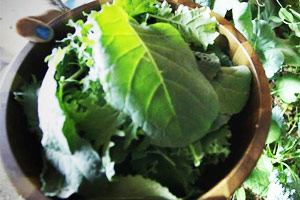I came across this article from the UC Berkely News Center on the concept of “urban food deserts” and how to forage for healthy eats in unlikely spots. It discussed the idea of “Urban Food Deserts” — something I had not ever heard of, and yet, was all too familiar with regardless.
An urban food desert is defined as, “an area without easy access to fresh, healthy and affordable food.” The article itself discusses a low-income neighborhood that houses more fast food joints and liquor stores than grocery stores. But with the proliferation of unlabeled genetically modified foods and labeled five-and-six syllable synthetic chemicals (labeled but entirely tough to pronounce, let alone comprehend without a chemistry degree), I have felt for awhile now that most grocery stores are also urban food deserts in this country.
As someone who is still a novice to prepping, this year was the first time I realized I already had a bunch of edible stuff right in my own backyard and didn’t even realize it, and that’s before I planted a single seed!
Walnuts that had fallen into my yard from a neighbor’s tree. A small fig bush. Dandelion roots which we were always told were part of a useless weed as a kid, but are actually full of antioxidants, promote digestion, balance beneficial bacteria in the gut, improve liver and kidney function, and even regulate blood sugar and insulin levels!
Yet, if you believe every lie coming out of Monsanto’s mouth, you’d see a dandelion and immediately reach for some Roundup glyphosate pesticide to spray all over it.
But what are weeds, really?
The article points out that many weeds are not weeds in the traditional concept at all, but instead many weeds are beneficial plants brought here on purpose for a good reason:
“Yes, these are weeds,” acknowledges Carlson, an ethnobotanist and integrative biology professor, happily munching on a low-lying edible called cat’s ear. “But many of these were brought to America long ago by immigrants from Europe and Asia who used them for foods and medicines. There are high rates of obesity and Type 2 diabetes in these food deserts, and study after study shows the benefits of eating more leafy greens. These are available and nutritious and free.”
Through the Berkeley Food Institute, several UC professors have started up a new site (complete with pictures!), “Reaping without Sowing: Urban Foraging and Berkeley Open Source Food,” where they will be “studying the availability, nutritional value, and possible toxicity of wild edibles that volunteer in urban food deserts. Our research hypothesis is that in many such areas, there is a free, abundant source of nutritious fresh food: edible weeds.”
Hopefully this will become another good resource in fighting back against urban food deserts and getting back in touch with what truly is and isn’t edible (and healthy!) in nature.
“Our survey has already confirmed that there are mountains of wild edible plants in urban food deserts in the Bay Area, even at the end of the summer in a record drought year (2014),” they write.
Looking back out at my backyard, I’m wondering how much more food is really out there that I have no idea about right now…
More on Foraging from Ready Nutrition
Foraging For Edible Weeds
Don’t Pull That Weed! A Closer Look at Purslane
The Delicious World Of Edible Hibiscus
Foraging For Mayapples
This article was originally published at Ready Nutrition™ on November 17th, 2014







